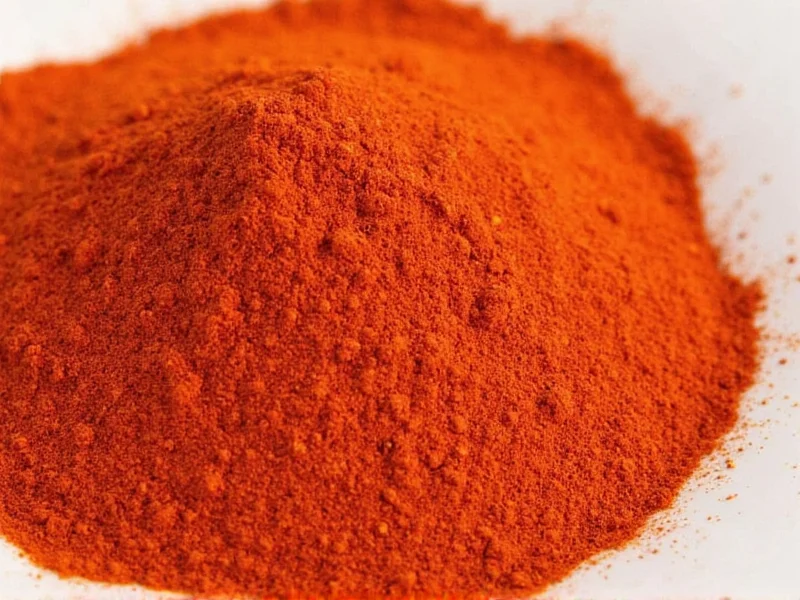Understanding the proper cayenne pepper substitute for chili powder requires recognizing their fundamental differences. Many home cooks mistakenly treat these spices as interchangeable, potentially ruining recipes with incorrect heat levels. This comprehensive guide explains precise substitution ratios, flavor considerations, and context-specific recommendations for successful cooking.
Understanding Cayenne Pepper vs. Chili Powder
Cayenne pepper consists of ground dried cayenne peppers, delivering consistent, intense heat with minimal complexity. Standard chili powder, however, is typically a blend containing ground chilies, cumin, garlic powder, oregano, and other spices. The heat level varies significantly between brands, but generally remains milder than pure cayenne.
When searching for best cayenne pepper substitute for chili powder in recipes, consider whether you need to replicate heat, flavor complexity, or both. The ideal replacement depends on your specific recipe requirements and desired outcome.
Substitution Guide for Cayenne Pepper and Chili Powder
| Substitution Direction | Ratio | Best For | Important Notes |
|---|---|---|---|
| Cayenne to Chili Powder | 1/8-1/4 tsp cayenne = 1 tbsp chili powder | Adding heat without overwhelming flavor complexity | Start with less; add gradually. Consider adding 1/4 tsp cumin to approximate chili powder's flavor profile |
| Chili Powder to Cayenne | 1-2 tbsp chili powder = 1 tsp cayenne | Recipes needing mild heat with complex flavor | Use 2x amount for mild chili powders. May require additional cayenne for sufficient heat in spicy dishes |
| Smoked Paprika Alternative | 1:1 ratio for mild recipes | Tex-Mex dishes needing smokiness | Add pinch of cayenne if more heat needed. Best cayenne pepper substitute for chili powder in chili con carne |
| Red Pepper Flakes | 1/2 tsp flakes = 1/4 tsp cayenne | Pizza, pasta dishes, sauces | Soak in warm oil first for even distribution. Not ideal for dry rubs or baking applications |
Context-Specific Substitution Recommendations
When determining what to use instead of cayenne pepper for chili powder in specific dishes, consider these guidelines:
For Tex-Mex and Southwestern Dishes
Chili powder's complex flavor profile works better in traditional chili, tacos, and enchiladas. If substituting cayenne, add complementary spices: for every teaspoon of cayenne, include 1/2 teaspoon cumin, 1/4 teaspoon garlic powder, and 1/4 teaspoon oregano. This creates a more authentic cayenne pepper substitute for chili powder in Mexican recipes.
For Baking and Dry Rubs
In spice rubs or baked goods where texture matters, cayenne's fine grind makes it superior to flaky alternatives. When replacing chili powder with cayenne in dry rubs, reduce the amount by 75% and add other spices to compensate for missing flavor dimensions.
For Sauces and Liquid-Based Dishes
Liquid recipes offer more flexibility. When substituting in hot sauces or soups, consider using hot paprika as a middle-ground option. For the best mild cayenne pepper substitute for chili powder, try Hungarian paprika mixed with a small amount of cayenne (15:1 ratio).
Flavor Profile Considerations
The critical difference between these spices extends beyond heat measurement. Cayenne delivers straightforward, intense heat with minimal aftertaste, while chili powder offers earthy, complex notes from additional spices in the blend. When seeking what can I use if I don't have chili powder but have cayenne, remember that you're replacing both heat and flavor complexity.
For recipes where chili powder's flavor matters more than heat (like stews or braises), consider this alternative blend: 2 parts paprika, 1 part cumin, 1/2 part garlic powder, and a pinch of cayenne. This creates a more authentic flavor profile than using cayenne alone as a cayenne substitute for chili powder in slow cooker recipes.
Common Substitution Mistakes to Avoid
Many cooks make critical errors when substituting these spices:
- Ignoring regional variations - Chili powder recipes differ significantly between Texas, New Mexico, and commercial blends
- Not adjusting for recipe moisture - Dry rubs require different ratios than liquid-based dishes
- Overlooking freshness factors - Old spices lose potency, requiring higher quantities
- Assuming all cayenne is equal - Heat levels vary between cayenne products by up to 30%
When experimenting with cayenne pepper as substitute for chili powder in homemade spice blends, always start with conservative amounts and taste frequently. The difference between perfectly spiced and ruined dishes often comes down to just 1/8 teaspoon of these potent ingredients.
Testing Your Substitutions
Before committing to a full recipe, test your spice substitution:
- Prepare a small sauce or broth base
- Add your substituted spice mixture
- Cool slightly and taste
- Adjust incrementally (1/16 tsp at a time)
- Allow flavors to meld for 10-15 minutes before final assessment
This method prevents wasted ingredients and ensures your cayenne pepper substitute for chili powder works in specific recipe context. Remember that heat perception increases as dishes cool, so test at serving temperature.











 浙公网安备
33010002000092号
浙公网安备
33010002000092号 浙B2-20120091-4
浙B2-20120091-4